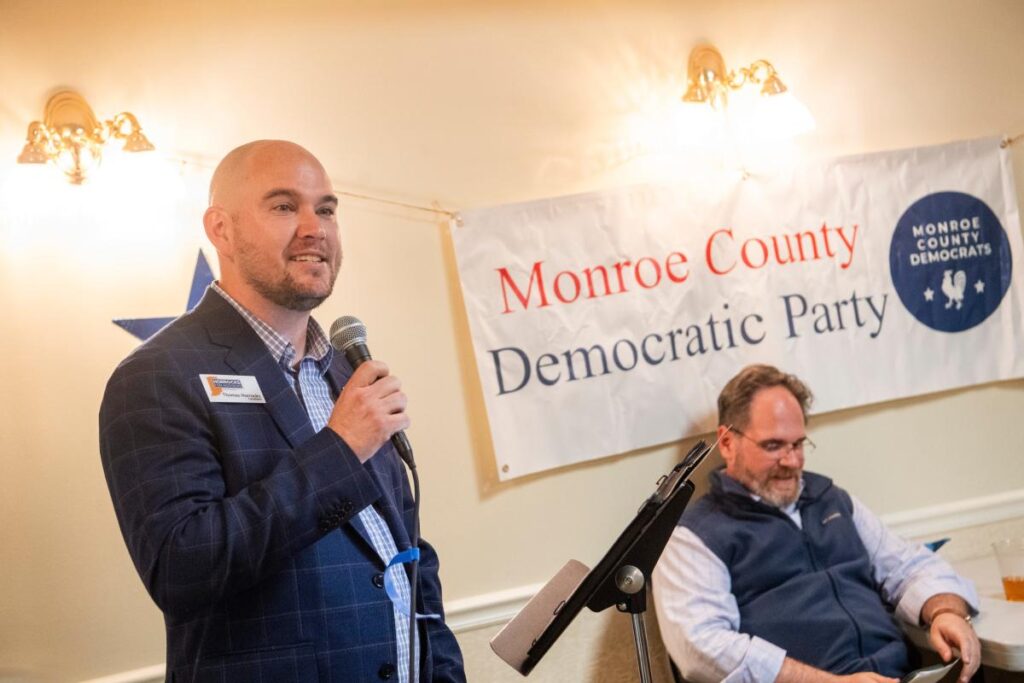The recent elections in Indiana’s District 62 showcased a closely contested race between Republican incumbent Dave Hall and Democratic newcomer Thomas Horrocks. Hall, who operates a corn and soybean farm in northwestern Jackson County, narrowly edged out Horrocks. In the early count, Horrocks briefly led with 63% of the votes, but as the evening progressed, Hall gained momentum and ultimately led with 51% by 10:30 p.m. Horrocks’s performance varied across counties, capturing 34% in Brown County but struggling in Jackson County, where he secured only 14%. Conversely, he had a stronger showing in Monroe County, achieving 56% of the counted votes by late in the evening.
This election continues a trend seen in the previous year, where Hall won the District 62 seat in a highly competitive race against Democrat Penny Githens; that contest was decided by just 74 votes following a recount that included several counties. Such narrow margins reflect the increasingly competitive and polarized nature of local politics in Indiana, especially in districts that span both rural and suburban demographics.
Other notable elections included District 46, where Republican incumbent Bob Heaton decisively won against Democrat Kurtis Cummings with a notable 2-1 vote margin. This district encompasses areas in northeast Monroe County, Owen County, and parts of Clay and Vigo counties, suggesting a strong Republican presence in the region. Meanwhile, in District 60, incumbent Peggy Mayfield also achieved a significant victory over Democratic challenger Michelle Higgs, despite Higgs initially leading with 75% of votes when the counts began in her favor. Ultimately, Mayfield garnered approximately 76% by the vote count’s conclusion.
In Bloomington’s Indiana House District 61, incumbent Democrat Matt Pierce retained his seat unopposed, reflecting solid support for his leadership. Additionally, State Sen. Shelli Yoder, a Democrat from Bloomington, also faced no opposition in her reelection bid in Indiana Senate District 40, underscoring the political tendencies in portions of Monroe County that favor Democratic candidates.
The race results in Indiana are not just confined to local offices; they also impact U.S. Congress representation. In Indiana’s 9th Congressional District, incumbent Republican Erin Houchin successfully defeated her Democratic opponent, Timothy Peck, while libertarian candidate Russell Brooksbank garnered around 2% of the vote. This outcome aligns with the broader trend of Republican dominance in many of the races, even as certain urban areas like Bloomington exhibit strong Democratic support.
Overall, the election outcomes across these various districts demonstrate the complex tapestry of Indiana’s political landscape, characterized by close races and varying political affiliations across counties. As the political context continues to evolve, the implications of these results will likely inform future strategies for both parties, especially as they seek to engage and appeal to a diverse electorate in both rural and urban areas. The trends observed this election cycle signal informative shifts in voter sentiment that could shape the political conversations in Indiana moving forward.

